As global demand for high-speed internet, cloud computing, and data center capacity continues to grow in 2025, understanding the key components of fiber optic networks is more important than ever. Among these components, fiber connector types are essential to network performance, reliability, and scalability.
This guide will walk you through the most common fiber connector types, explaining their characteristics, advantages, and typical use cases. Whether you’re planning an FTTH deployment, upgrading a data center, or working in telecom infrastructure, this guide will help you make informed decisions when choosing fiber connectors.
Table of contents
What Are Fiber Connectors?
A fiber optic connector is a mechanical device used to align and join optical fibers, enabling light to pass through with minimal loss. Unlike fiber splicing, which is permanent, connectors allow for easy connection and disconnection of cables, making them ideal for maintenance and flexibility in network configurations.
Connectors come in different shapes, sizes, and coupling mechanisms depending on the environment, fiber count, and performance requirements. Choosing the right type of connector is critical to ensuring low insertion loss, return loss, and physical compatibility with your patch panels, transceivers, and equipment.
5 Common Fiber Connector Types
In 2025, several connector types remain dominant across industries. Here are the five most widely used fiber connector types:
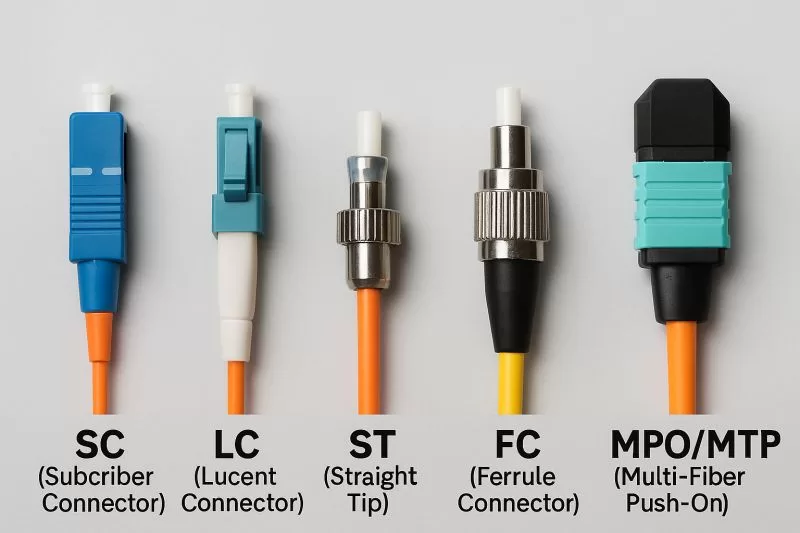
1. SC (Subscriber Connector)
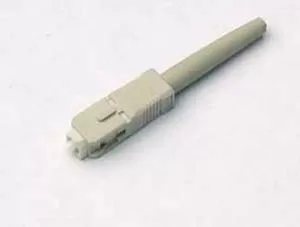
การ SC connector is one of the earliest and most enduring types in the fiber optic world. Known for its square shape and push-pull coupling, SC is widely used in FTTH (Fiber to the Home) deployments and data center applications.
- Design: 2.5mm ferrule, push-pull coupling
- Polish Types: APC or UPC
- Use Cases: FTTH, telecom rooms, patch panels
- Advantages: Easy to use, reliable locking mechanism, cost-effective
เซาท์แคโรไลนา/เอพีซี connectors are especially popular for applications where low return loss is essential, such as RF video or GPON networks.
2. LC (Lucent Connector)
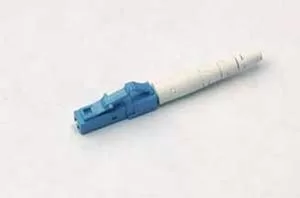
การ LC connector is a miniaturized version of the SC connector, featuring a 1.25mm ferrule, which makes it ideal for high-density applications. It uses a latch mechanism similar to an RJ45 plug, offering secure connections in tight spaces.
- Design: 1.25mm ferrule, latch locking
- Polish Types: APC or UPC
- Use Cases: Data centers, high-density switch ports, transceivers (SFP, QSFP)
- Advantages: Compact size, high performance, widely supported
LC connectors have become the go-to standard in modern data centers due to their small form factor and excellent performance in duplex or simplex configurations.
3. ST (Straight Tip)
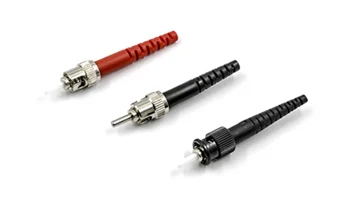
การ ST connector is one of the oldest connector designs and features a bayonet-style twist-lock mechanism. It’s primarily used in legacy systems, industrial applications, and certain military-grade networks.
- Design: 2.5mm ferrule, twist-lock bayonet coupling
- Use Cases: Campus networks, industrial systems, legacy telecom
- Advantages: Durable, secure connection in rugged environments
- Limitations: Larger footprint, less common in new deployments
While less common in modern networks, ST connectors are still in use where robust mechanical connections are required.
4. FC (Ferrule Connector)
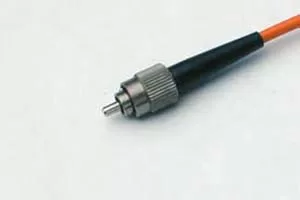
การ FC connector features a threaded coupling, making it highly secure in high-vibration environments such as factories, railway networks, or aviation systems.
- Design: 2.5mm ferrule, screw-on thread coupling
- Use Cases: Lab testing, measurement equipment, industrial environments
- Advantages: Excellent precision and durability
- Limitations: Slower to connect/disconnect compared to push-pull types
FC connectors are known for high-precision alignment and low signal loss, but they’re gradually being replaced by LC and SC in most telecom environments.
5. MPO/MTP (Multi-Fiber Push-On)
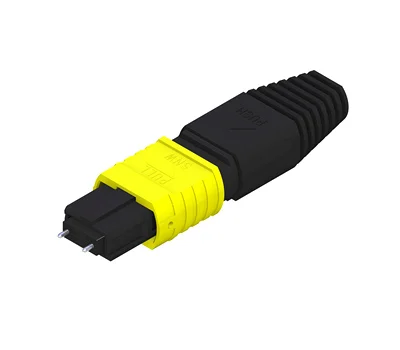
การ MPO/MTP connector is a multi-fiber connector designed to handle parallel fiber transmission, typically 8, 12, 16, or 24 fibers per connector. These are essential in high-speed network environments such as 40G, 100G, and 400G Ethernet, where multiple channels are transmitted simultaneously.
- Design: Rectangular body, push-pull latching
- จำนวนไฟเบอร์: 8, 12, 16, 24, 32, or more
- Use Cases: Data centers, backbone links, cloud infrastructure
- Advantages: High density, quick deployment, scalable bandwidth
- Considerations: Requires polarity management, cleaning tools, proper alignment
MTP is an enhanced version of MPO with better mechanical performance, lower insertion loss, and more durability. Leading data centers now use MTP breakout cables for QSFP transceivers and trunk cabling.
Other Fiber Connector Types (Honorable Mentions)
While the five types above dominate the industry, there are other specialized connectors worth mentioning:
- E2000: High-performance with spring-loaded shutter for safety
- MU: Miniature version of SC, mainly used in Japan and some legacy systems
- DIN: Threaded like FC but more compact
- SN and CS Connectors: Emerging in 2025 for ultra-high density 400G/800G transceivers
Fiber Connector Polish Types: UPC vs APC
When choosing connectors, the polish type affects signal reflection and insertion loss:
- UPC (Ultra Physical Contact):
- Blue connector head
- Low insertion loss (~0.2dB)
- Return loss ~ -50dB
- Suitable for most Ethernet, LAN, and OTN systems
- APC (Angled Physical Contact):
- Green connector head
- Very low return loss (~ -60dB or better)
- Designed for GPON, RF, and FTTx where reflections must be minimized
Mixing UPC with APC can lead to high signal loss—so always match polish types.
Tips for Choosing the Right Fiber Connector Type
Here are some expert tips to help you select the right fiber connector for your project:
- For FTTH installations: SC/APC or LC/APC are preferred for low return loss
- For data centers: LC for patch panels, MTP for trunk cabling and high-speed backbones
- For industrial or vibration-prone areas: FC or ST connectors are more suitable
- For emerging 400G/800G systems: Consider SN or CS connectors for space-saving designs
Also, ensure proper cleaning tools and practices are in place—dirty connectors are one of the top causes of signal degradation.
Final Thoughts
Understanding the different fiber connector types is essential for planning and maintaining efficient optical networks. In 2025, the trend is moving toward higher-density, faster, and modular solutions, and selecting the right connector type is a foundation of network success.
From SC to MPO/MTP, every connector type has a place in modern fiber optics. As a network professional, sourcing manager, or installer, knowing their pros, cons, and applications will help you build more reliable and future-ready networks.
Need Help Choosing Fiber Connectors?
We manufacture and supply a wide range of fiber optic connectors and assemblies for FTTH, data centers, and telecom networks. Contact us today for free quote and free samples.
Our Email: [email protected]
